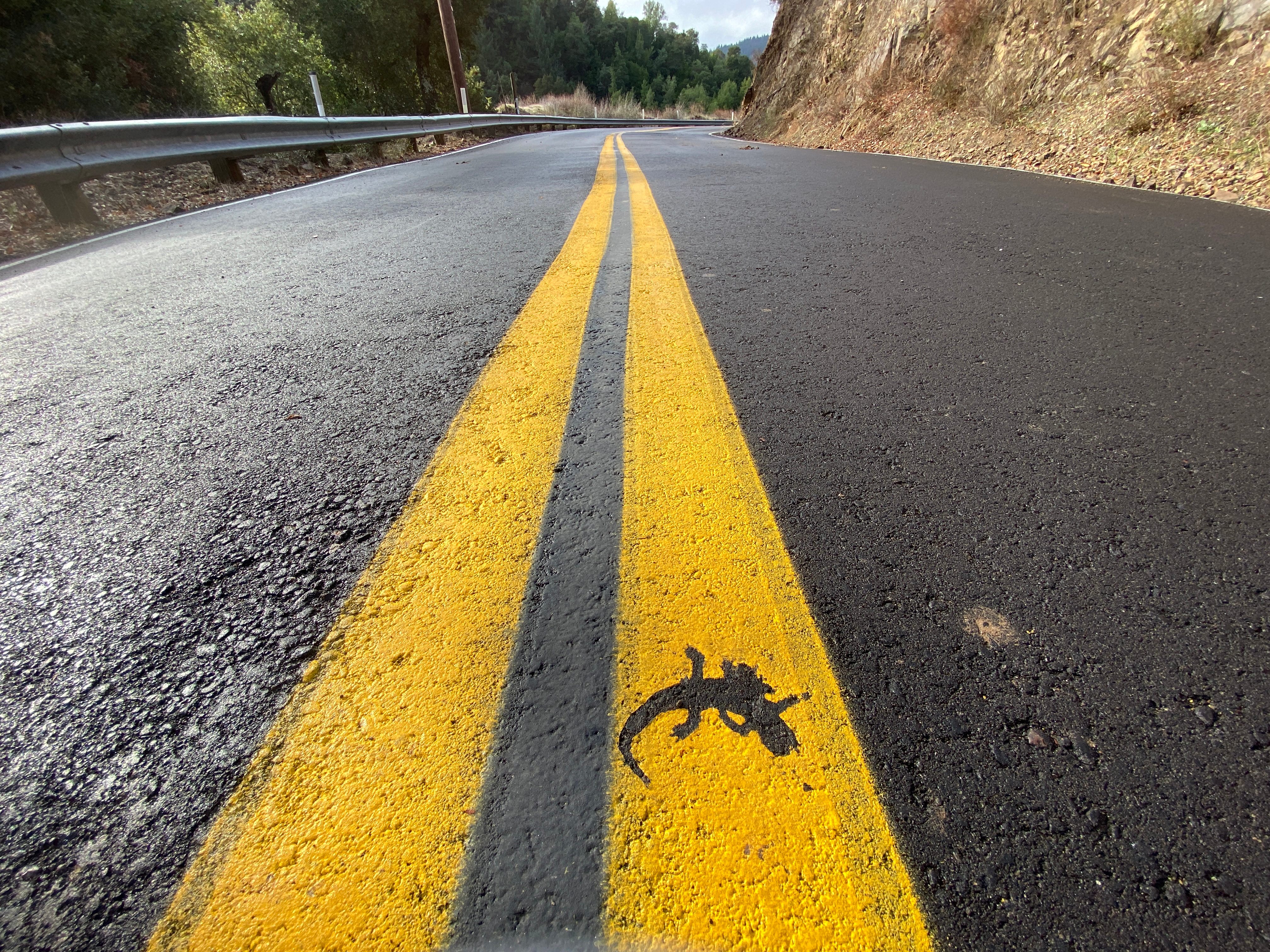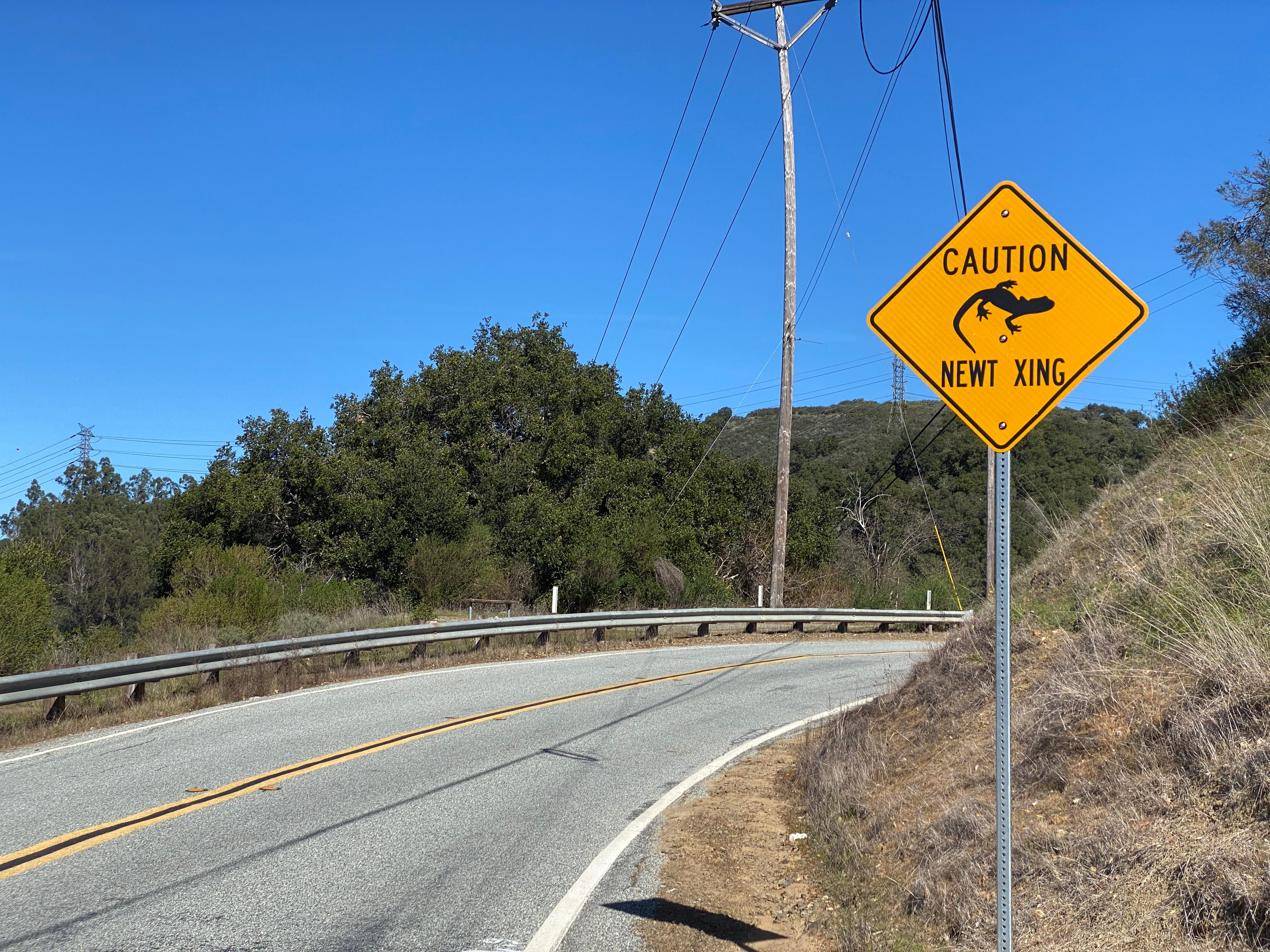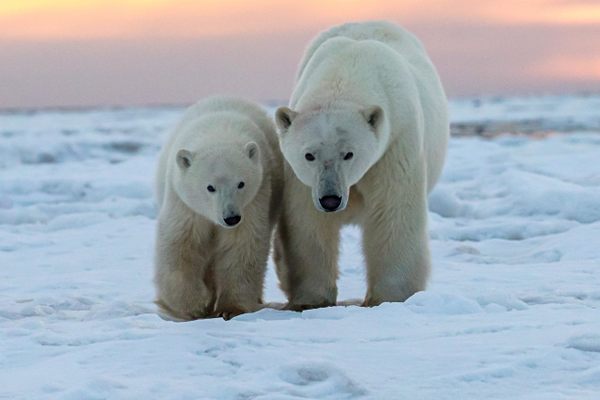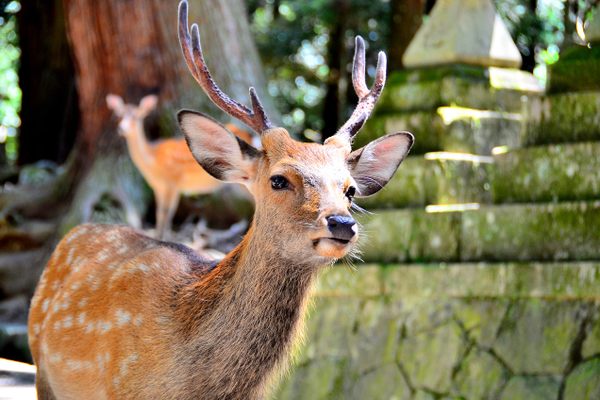Can Citizen Scientists Prevent Another Pacific Newt Massacre?
Cars are annihilating the tiny amphibians.
The day’s first kill is barely recognizable, a burnt sienna smudge on the dark pavement. Dr. Merav Vonshak kneels in the cool November morning and pulls out her phone and ruler, documenting the tiny, crushed body of a Pacific newt. By spring’s end, she and the other Newt Patrol volunteers who keep watch over this four-mile stretch of road in the foothills of Northern California’s Santa Cruz Mountains will have recorded around five thousand of them—one of the single largest murder rates of any wildlife species anywhere in the world.
Two species of Pacific newt are endemic to these fog-kissed coastal forests, the California newt (Taricha torosa) and the rough-skinned newt (Taricha granulosa). Each year, when seasonal rain begins to fall in November, they are coaxed from underground burrows toward their reproductive destiny in the waters of the Lexington Reservoir. But the journey is a treacherous one. The impossibly slow-moving, randy amphibians must travel long distances (up to a few miles), down wooded slopes and cross a freshly paved road on which the 25-mile-per-hour speed limit is more a suggestion than a requirement, to mate and lay eggs in the water. They then retrace their steps, across the road and up the mountain back to their forest home.

The carnage the Pacific newts suffer on their annual migration is profound. Nearly 40 percent are killed by passing cars, though the number may be closer to 80 percent, according to Vonshak; studies suggest that in the days between newt patrols, more than half of the dead are eaten by animals, blown away or disintegrated by rain before they can be counted. “Newts are very slow, and they freeze under threat.” she explains as she walks down Alma Bridge Road, her eyes never disengaging from their forensic scan of the pavement. Traveling mostly at night, hundreds of three-inch-long bodies creep simultaneously along a four-mile stretch of road; there’s no way to avoid them, she says. “They just look like leaves. One car could kill fifty on just one ride to the supermarket.”
No one knows how long the annual massacre has been taking place. No one even noticed until 2017. That November, Anne Parsons, a trail patrol volunteer with the Midpeninsula Regional Open Space District (Midpen) which preserves and manages thousands of acres of open space, trails, and waterways in the area, discovered 42 Pacific newts lying dead on a 1.7-mile section of Alma Bridge Road. Appalled, she began to document the fallen amphibians on the citizen-science database iNaturalist. The following migration season, 2018-2019, she returned with a plan.
For the next several months, Parsons surveyed both sides of the road biweekly, geotagging and photographing each roadkill, 4,892 newts altogether. “From the very beginning, I’ve felt as though I’ve been witnessing the annihilation of two populations of newts, Taricha torosa and T. granulosa,” she wrote in an unpublished 2021 report of her findings. And she was.
The following season, other volunteers including Vonshak, an ecologist and entomologist by training, and the founder of the BioBlitz Club, a citizen-scientist organization documenting plant and animal species in Santa Clara County, joined Parsons. (Vonshak now leads the Newt Patrol.) Just like the previous year, more than five thousand newts were found dead on Alma Bridge. Another 4,939 were lost the following year.

“A big population [of Pacific newts] would be in the thousands and that’s how many are dying on [Alma Bridge Road] every year.” explains Dr. Fraser Shilling, director of the Road Ecology Center at University of California Davis, who has been assisting Vonshak and the Newt Patrol on their mission. “One of the experts in the state for this kind of issue said she hadn’t ever heard of a rate of mortality this high. I can’t think of a more urgent wildlife situation in California except for the mountain lions.”
Not convinced by the stringent methodology of Parsons, Vonshak, and their allies, Midpen and other local governmental and non-governmental agencies including the Santa Clara County Parks and Roads Departments, the Peninsula Open Space Trust and Santa Clara Valley Water enlisted a local consultant to conduct a Pacific newt mortality study of their own. The results of the survey confirmed the findings of the citizen scientists. Of the estimated 13,786 adult Pacific newts attempting to get to or leave Lexington Reservoir between November 2020 and March 2021, approximately 5,404 didn’t make it. Based on their calculations, the study’s authors predict that the entire population—likely the largest Pacific newt population between California’s Bay Area and southern Alaska—will be extinct in approximately 57 years.
“They’ve finally realized there’s a problem, and they need to fix it,” says Vonshak. The question is how.
While “newt crossing” signs installed at mile intervals on the road about 18 months ago have raised awareness about the life and death of the amphibians, they’ve done nothing to staunch the bloodshed. To reduce their mortality rates, says Shilling, “you have to get the cars off the road or the roads off the newts.”

Building fencing along the road to safely funnel the newts through passages beneath elevated road sections was briefly considered by the county, but funding for the project was ultimately rejected. Closing the road to non-local traffic or closing it at night or during and immediately after rainstorms when the newts travel would be cheaper, but each is politically challenging, he continues. “I don’t know what the answer is.” One of the biggest tragedies, says Shilling, is that the cost of protecting the newts is likely around just 0.001 percent of the state’s transportation budget, not much more than the $215,000 spent to re-study an extinction event already well documented by citizen scientists.
But as awareness of the annual massacre grows, so too does the pressure on Santa Clara County and Midpen to save the population. At the latter’s board of directors meeting on December 8, more than 100 members of the public submitted comments addressing the plight of the newts. Each was read aloud, a collective outpouring of grief for a species being decimated in real time.
Back on Alma Bridge Road, the dry November day’s survey has yielded only ten tiny, broken Pacific newts. In a month or two, when the rains come more regularly, they’ll be finding 200 to 300 per survey on just half of the road’s length.
“Our volunteers are burned out. We’re burned out. It’s rough, really rough. At the end of the season, we have to dig deep,” says volunteer Robin Agarwal,* as she removes her highlighter-yellow Newt Patrol safety vest. “But nobody’s going to speak for the newts if we don’t.”
Correction: The original version of this story misspelled Robin Agarwal’s name.
























Follow us on Twitter to get the latest on the world's hidden wonders.
Like us on Facebook to get the latest on the world's hidden wonders.
Follow us on Twitter Like us on Facebook